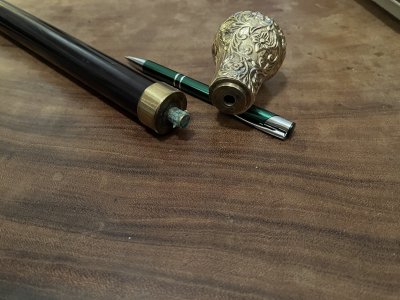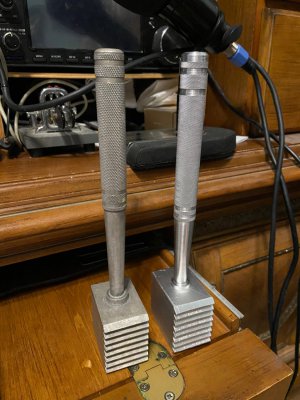A friend I play tennis with heard I was resuming machining after a 60 break and asked if I could turn metal. I of course said yes, and sent him an image of an aluminum meat mallet that I had just made.
Then he sent me the image of his walking stick parts, see attached image. His idea is to turn down the top of the stick so the pin would fit in the bottom of the head. I am thinking it would be better to make a piece that goes between the top of the stick and the bottom of the ornate head that would produce a near seamless fit and would make it appear manufactured as three pieces that fit perfectly together.
I have just recently returned to machining after a 60+ year break and would appreciate hearing all your comments and thoughts on the project. How would you go about it?
I assume I could hold the ornate head in a four-jaw chuck. The walking stick is just under 3/4" in diameter, so it should slide through the spindle on the 7X14" lathe. But I am thinking a better and safer solution would be to focus my primary effort on making a piece to go between the two pieces.
Again, all comments will be appreciated. Terry - W6LMJ
Then he sent me the image of his walking stick parts, see attached image. His idea is to turn down the top of the stick so the pin would fit in the bottom of the head. I am thinking it would be better to make a piece that goes between the top of the stick and the bottom of the ornate head that would produce a near seamless fit and would make it appear manufactured as three pieces that fit perfectly together.
I have just recently returned to machining after a 60+ year break and would appreciate hearing all your comments and thoughts on the project. How would you go about it?
I assume I could hold the ornate head in a four-jaw chuck. The walking stick is just under 3/4" in diameter, so it should slide through the spindle on the 7X14" lathe. But I am thinking a better and safer solution would be to focus my primary effort on making a piece to go between the two pieces.
Again, all comments will be appreciated. Terry - W6LMJ



